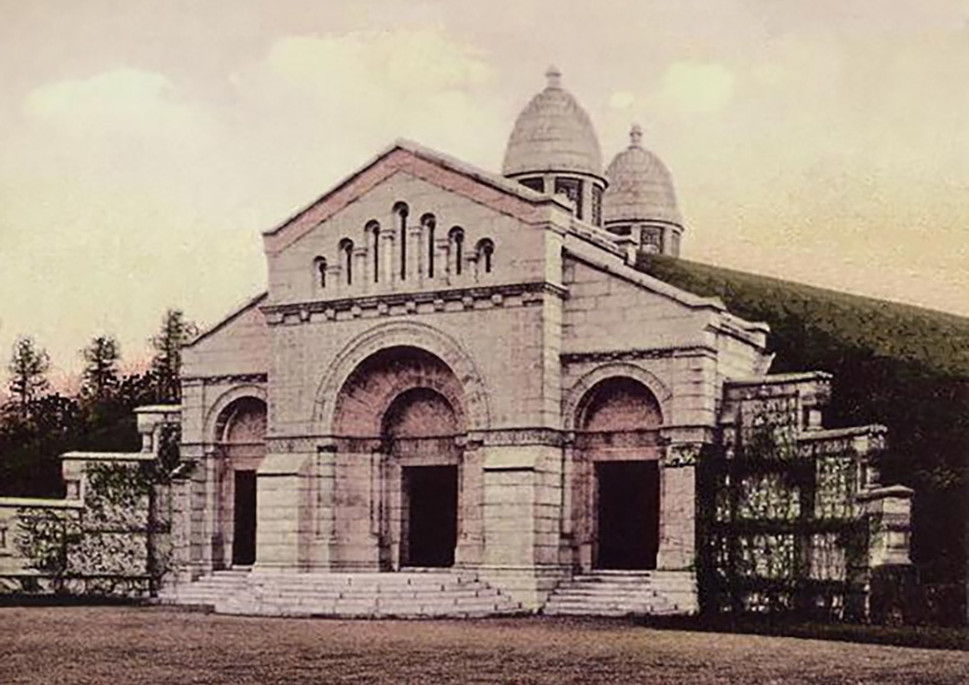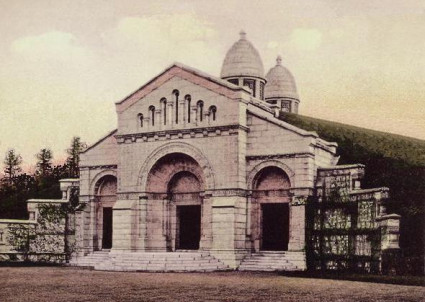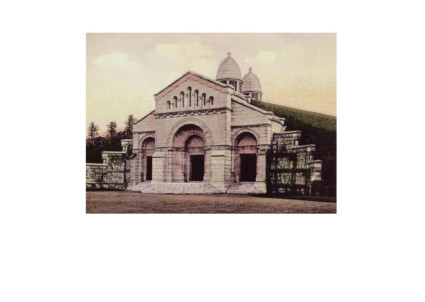Vanderbilt Mausoleum, Staten Island
Address: Moravian Cemetery, 2205 Richmond Road
Architect: Richard Morris Hunt
Constructed: 1885-86
LPC Action: 1980
LPC Backlog Hearing: Prioritized for designation
Designated on April 12, 2016
Cornelius Vanderbilt and his son William Vanderbilt donated roughly 12 acres (which was later greatly expanded) for Moravian Cemetery, setting aside a private section for a grand family mausoleum. For its design, they commissioned Richard Morris Hunt, a noted architect and champion of the Beaux-Arts style in America. Hunt’s extant works are rare in New York City, but include the Fifth Avenue façade of the Metropolitan Museum of Art. The Romanesque Revival style stone mausoleum, abounding in round arches and intricate carvings, is capped by two small domes. The private lot is approached through a massive stone arch with an inset iron gate, referencing the arches of the mausoleum beyond. The surrounding landscape was designed by Frederick Law Olmsted, considered to be the father of landscape architecture in America, who often collaborated with Hunt. In fact, their collaboration on the mausoleum and its grounds would inspire the Vanderbilts to hire the pair to design the Biltmore Estate in Asheville, North Carolina, perhaps the most famous landmark associated with the Vanderbilt family.
LPC Statement of Significance:
The Vanderbilt Mausoleum, located in the Vanderbilt Cemetery which itself is part of the Moravian Cemetery, is one of the rare surviving works of architect Richard Morris Hunt in New York City. Commissioned by William Henry Vanderbilt (1821-1885), it was built between 1881 and 1889. Members of the Vanderbilt family had been associated with the New Dorp Moravian Church since its founding in 1742. Consequently, the desire of W.H. Vanderbilt to locate the family cemetery within the Moravian Cemetery is quite understandable. Hunt, the foremost American architect of his day and designer of several houses for members of the Vanderbilt clan, used a modified Romanesque Revival style to create a severe, yet imposing, family tomb, accentuated by the use of round arches and two small domes. A massive round-arched gate, echoing the design of the mausoleum, sets off the entrance to the Vanderbilt Cemetery. The landscaping of the cemetery was undertaken by Frederick Law Olmsted, America's most notable landscape architect, who collaborated with Hunt on other projects. Tombs and grave sites of other Vanderbilt family members are also in the cemetery.


